ggplot(data = my_data, mapping = aes(x = var1, y = var2)) +
geom_line()Data Visualization
Sections 2.4 - 2.6
Today’s goals
- Create a linegraph
- Create a histogram
- Properly describe a linegraph and histogram
- Facet graphs based on subgroups
Artwork by @allison_horst
5NG#2: Linegraphs
Linegraphs show the relationship between 2 numerical variables.
The explanatory (x-axis) variable must be of sequential ordering.
Linegraph syntax in R:
5NG#2: Linegraphs
When describing linegraphs…
- Look for pattern going from left to right.
- Classify association as positive, negative, or no association.
- Classify relationship as linear or non linear.
- Check x and y scales to make sure they are appropriate.
5NG#3: Histograms
- Histograms are used to visualize the distribution of a single numerical variable.
- Histograms display numerical data by grouping data into bins of equal width.
- There is no ‘y’ position aesthetic for
geom_histogram()because we are investigating a single variable.
5NG#3: Histograms
Histogram syntax in R:
There are 3 things we look and describe when inspecting a histogram:
shape (skew and modality)
center (mean or median)
spread (range, IQR, or standard deviation)
Not all distributions have a simple recognizable shape!
Type colors() in the console to view all possible colors.
5NG#3: Histograms




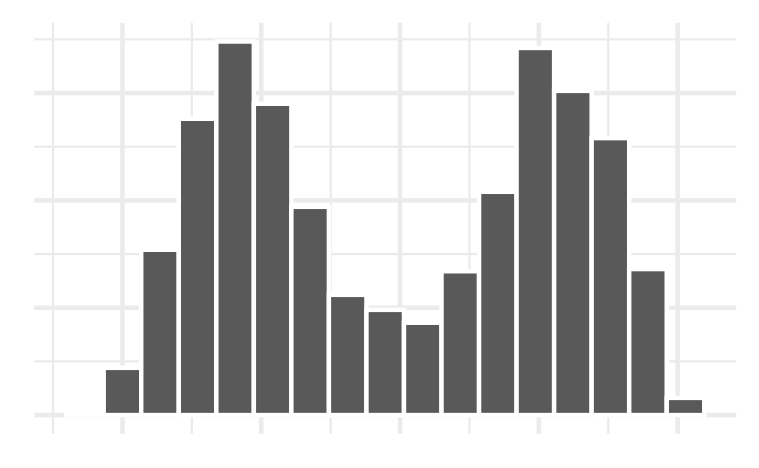
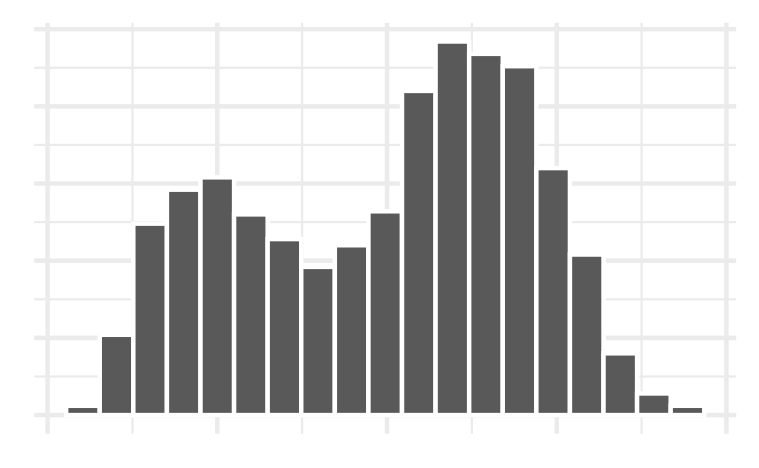
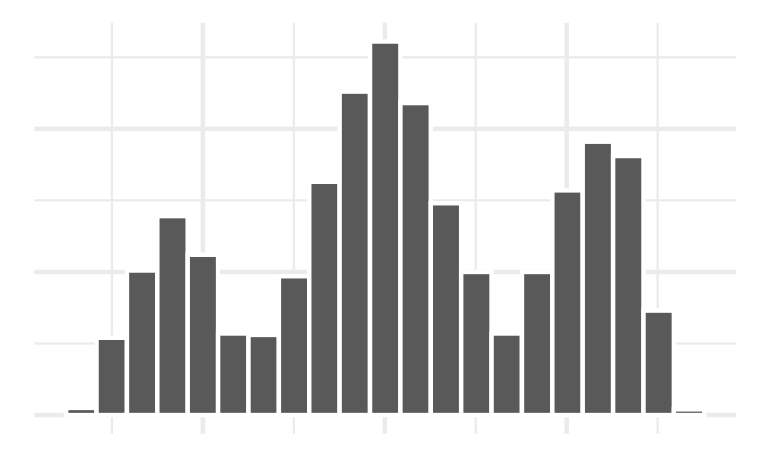
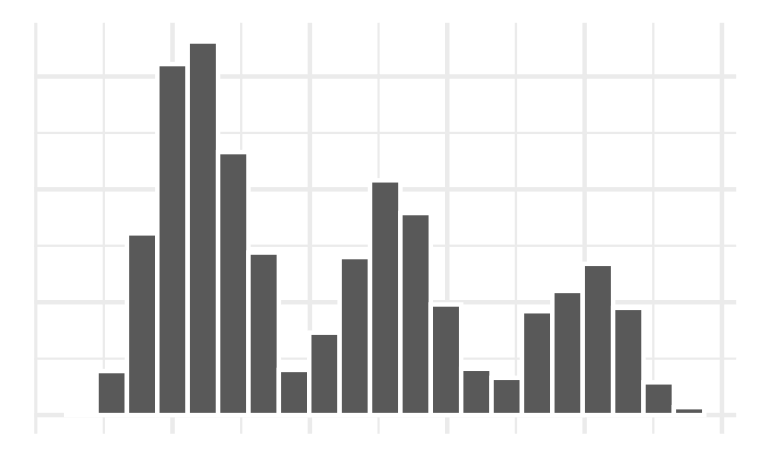

Example 1: Histogram bins
Which bin size is most appropriate and describe the distribution of penguin body mass.
![]()
https://northwestern-university.shinyapps.io/lec03_histogram/
Example 2: Histogram bins
Which bin size is most appropriate and describe the distribution of penguin flipper length.
Faceting
Faceting is used to make the same plot for different subgroups of the dataset.
This is useful for comparing the same variable across different subgroups in the dataset.
facet_wrap(~var)can be added on to ANY plot type (scatterplot, linegraph, histogram, boxplot, barplot)
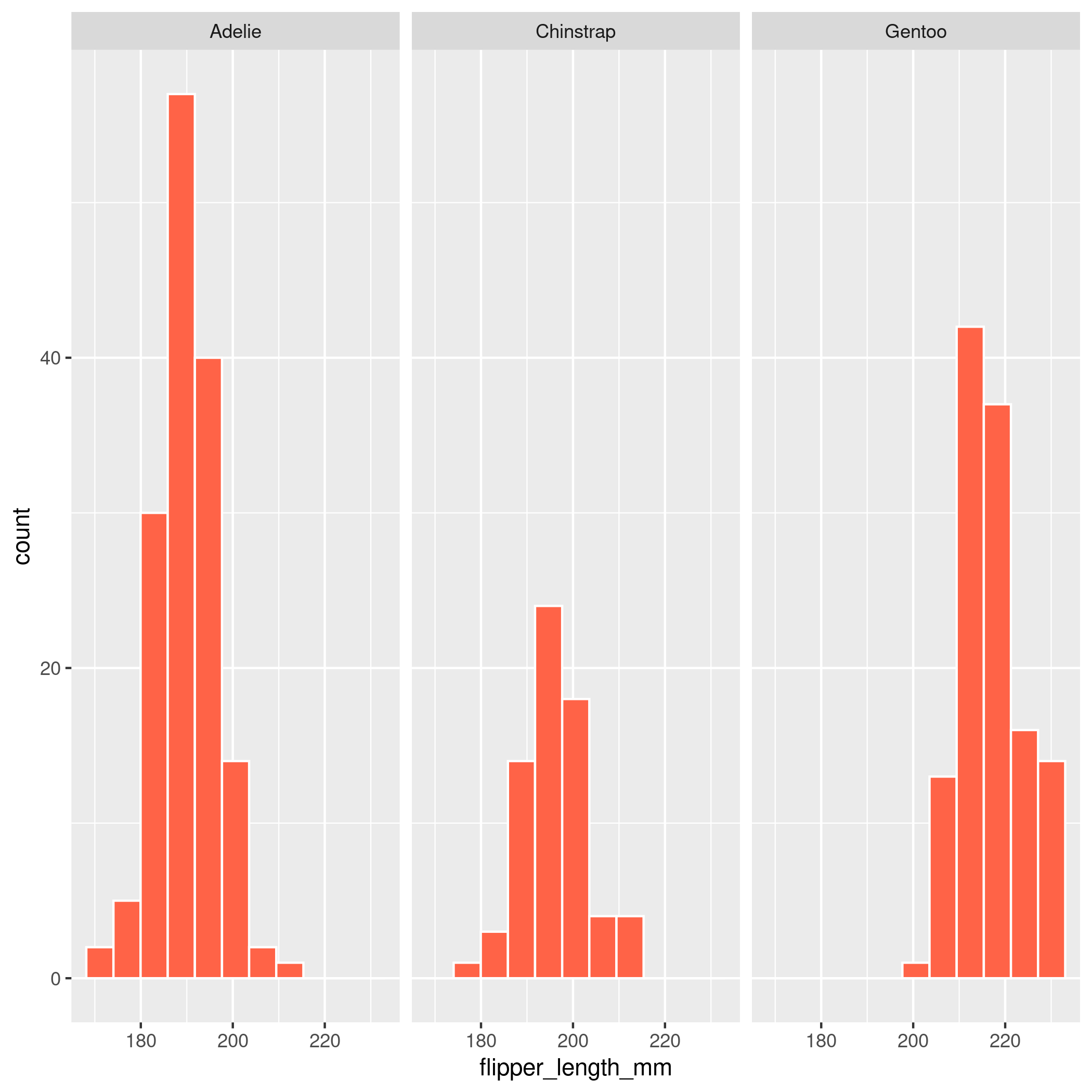
Common Coding Errors
![]()
Which of the following are correct?
a) b) c) d) Extra information and resources
Helpful guidelines:
Larger number of observations generally correspond to larger number of bins needed.
You will generally need to test several different number of bins to learn about the data and find an appropriate value.
Sturges Rule of Thumb for unimodal symmetric distributions: bins = 1 + 3.322*log(n)
Sturge’s rule is not great if the data is severely skewed, multi-modal, or for an extremely large number of observations. But it could give you a starting place and then you will want to increase the number of bins until you can properly see the shape.






